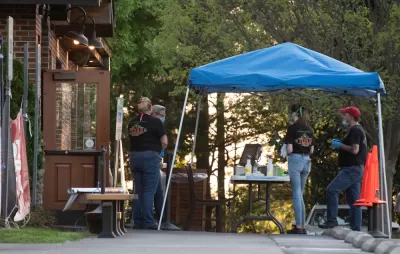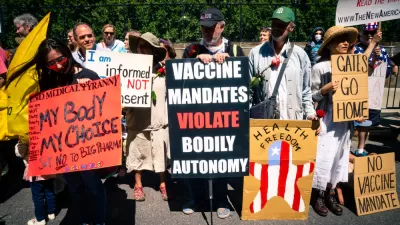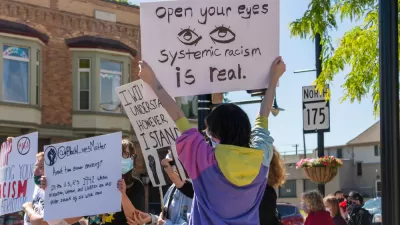The realities of social distancing are allowing for innovations and experimentations with real opportunities for long-term benefit in cities, according to an article by Allison Arieff.

Staying at home to stem the spread of the coronavirus has offered a rare experiment, according to an article by Allison Arieff: "We can see our cities for the first time without the choking traffic, dirty air and honking horns that have so often made them intolerable."
Arieff is encouraged by the adaptability of San Francisco during this time of crisis—residents have turned the city into a pedestrian's paradise, the streets are quieter, and the skies are bluer. Arieff also acknowledges that Covid-19 is also "laying bare the stark reality of income inequality," but some of the innovations and "MacGyvering" that have taken root in response to the crisis have the potential to create a new normal after the crisis has abated, according to Arieff.
One of the key ways that potential is being realized and showcased during the crisis is on streets: "Urban planners have long argued that more streets should close to make more livable spaces, but governments have always resisted, calling it impractical or impossible. They’ve just proved it can happen — and they should keep it going after the crisis."
The mere existence of this experiment in the public realm, and several other, smaller interventions, like deactivated pedestrian "beg buttons," offer some hope that cities will eventually act to prevent the worst outcomes of climate change. Time will tell whether these changes can last, according to Arieff, and for the many hopeful developments listed in this story, there are also concerning developments regarding privacy and discrimination.
FULL STORY: The Magic of Empty Streets

Manufactured Crisis: Losing the Nation’s Largest Source of Unsubsidized Affordable Housing
Manufactured housing communities have long been an affordable housing option for millions of people living in the U.S., but that affordability is disappearing rapidly. How did we get here?

Americans May Be Stuck — But Why?
Americans are moving a lot less than they once did, and that is a problem. While Yoni Applebaum, in his highly-publicized article Stuck, gets the reasons badly wrong, it's still important to ask: why are we moving so much less than before?

Using Old Oil and Gas Wells for Green Energy Storage
Penn State researchers have found that repurposing abandoned oil and gas wells for geothermal-assisted compressed-air energy storage can boost efficiency, reduce environmental risks, and support clean energy and job transitions.

Updating LA’s Tree Rules Could Bring More Shade to Underserved Neighborhoods
A new USC study finds that relaxing Los Angeles’ outdated tree planting guidelines could significantly expand urban tree canopy and reduce shade disparities in lower-income neighborhoods, though infrastructure investments are also needed.

California's Canal Solar Projects Aim to Conserve Resources and Expand Clean Energy
California’s Project Nexus has begun generating electricity from solar panels installed over irrigation canals, with researchers and state agencies exploring statewide expansion to conserve water and boost clean energy production.

HHS Staff Cuts Gut Energy Assistance Program
The full staff of a federal program that distributes heating and cooling assistance for low-income families was laid off, jeopardizing the program’s operations.
Urban Design for Planners 1: Software Tools
This six-course series explores essential urban design concepts using open source software and equips planners with the tools they need to participate fully in the urban design process.
Planning for Universal Design
Learn the tools for implementing Universal Design in planning regulations.
Heyer Gruel & Associates PA
City of Moreno Valley
Institute for Housing and Urban Development Studies (IHS)
City of Grandview
Harvard GSD Executive Education
Salt Lake City
NYU Wagner Graduate School of Public Service
City of Cambridge, Maryland





























